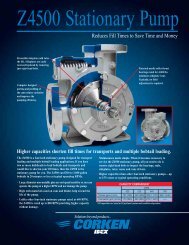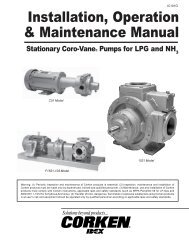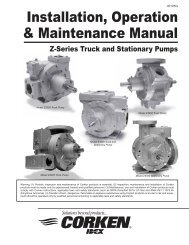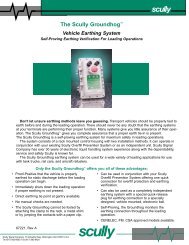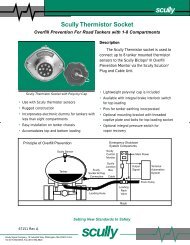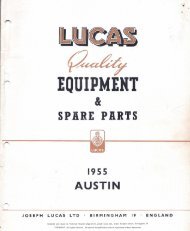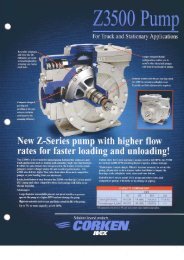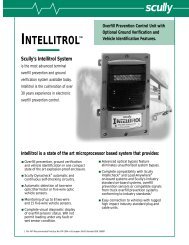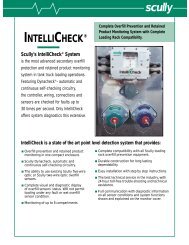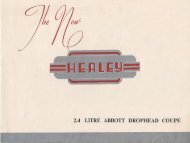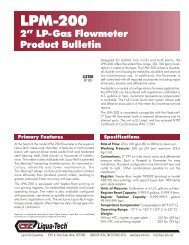Installation, Operation & Maintenance Manual - Acme Fluid Handling
Installation, Operation & Maintenance Manual - Acme Fluid Handling
Installation, Operation & Maintenance Manual - Acme Fluid Handling
You also want an ePaper? Increase the reach of your titles
YUMPU automatically turns print PDFs into web optimized ePapers that Google loves.
2.4 Liquid TrapsCompressors are designed to pressurize gas, notto pump liquids. The entry of even a small amountof liquid into the compressor will result in seriousdamage to the compressor.On liquefied gas applications, a liquid trap must be usedto prevent the entry of liquid into the compressor.SERVICE TO PERFORMVALVE POSITION4-WAY A B C1. Unload Tank Car into Position Open Open CloseStorage TankOne2. Recover Vapors from Tank Position Close Open OpenCar into Storage TankTwoFigure 2.3C: Three-Valve Manifold Piping Systemlarge enough to do a good job and these should be replacedby a suitable size valve. The liquid discharge should beconnected to the tank truck pump inlet line rather than theoften oversized filler valve connection in the tank head.Corken offers three types of liquid traps for removal ofentrained liquids. The simplest is a mechanical float trap(see figure 2.4A). As the liquid enters the trap the gasvelocity is greatly reduced, which allows the entrainedliquid to drop out. If the liquid level rises above theinlet, the float will plug the compressor suction. Thecompressor creates a vacuum in the inlet piping andcontinues to operate until the operator manually shuts itdown. The trap must be drained and the vacuum-breakervalve opened before restarting the compressor, to allowthe float to drop back. This type of trap is only appropriatefor use where the operator keeps the compressor underfairly close observation. This trap is provided with the109 and 107 compressor packages (see Appendix C fordetails on standard Corken compressor packages).When the compressor will not be under more-or-lessconstant observation an automatic trap is recommendedIt is of extreme importance to prevent the entry of liquidinto the compressor. The inlet of the compressor shouldbe protected from liquid entry by a liquid trap (see section2.4). It is of equal importance to protect the dischargeof the compressor from liquid. This may be done byinstalling a check valve on the discharge and designingthe piping so liquid cannot gravity-drain back into thecompressor. Make sure to install a check valve on vaporlines discharging to the liquid space of the tank.All piping must be in accordance with the laws andcodes governing the service. In the United States, thefollowing codes apply:For LP Gas – The National Fire Protection AssociationPamphlet No. 58, Standard for the Storage and <strong>Handling</strong>of Liquefied Petroleum Gases.For Ammonia – The American National StandardsInstitute, Inc., K61.1-1989, Storage and <strong>Handling</strong> ofAnhydrous Ammonia.Copies of these are available from NFPA, 60 BaterymarchStreet, Boston, Mass, 02110 and ANSI, 1430 Broadway, NewYork, N.Y., 10018. Install, use and maintain this equipmentaccording to Corken instructions and all applicable federal,state, and local laws and previously mentioned codes.Figure 2.4A: Mechanical Trap10



